Bread Tahdig Recipe (Crispy Persian rice with bread)
Bread Tahdig is one of the good ideas to serve besides rice and it’s so crunchy and delicious. It makes your table nice and stylistic and is just lovely. Bread Tahdig is the part of the polo that sticks to the pot bottom and gets finely crispy and toasted. Tahdigs of different kinds including bread tahdig, potato tahdig and tahdig with yoghurt and saffron are popular in Iran.
I suggest that when cooking rice, make your food much more delicious and attractive with this bread tahdig. It only takes a minute or two to put tahdig in the pot you’re going to make steamed rice with and then you can enjoy the persian rice with bread crust. In Iran, the bread tahdig is usually make with a thin bread called Lavash bread.
Persian polo is made in two ways: Abkesh (use colander) and Kateh. In this post, I’m going to explain how to cook rice by Abkesh or Ashpali method. The recipe of bread tahdig (Persian rice with bread crust) is very simple and there’s just a few easy tricks to it.
In this post, I’m going to describe all the tricks you need to have a crispy tahdig. Bread tahdig is similar to potato tahdig and there’s no big differences.
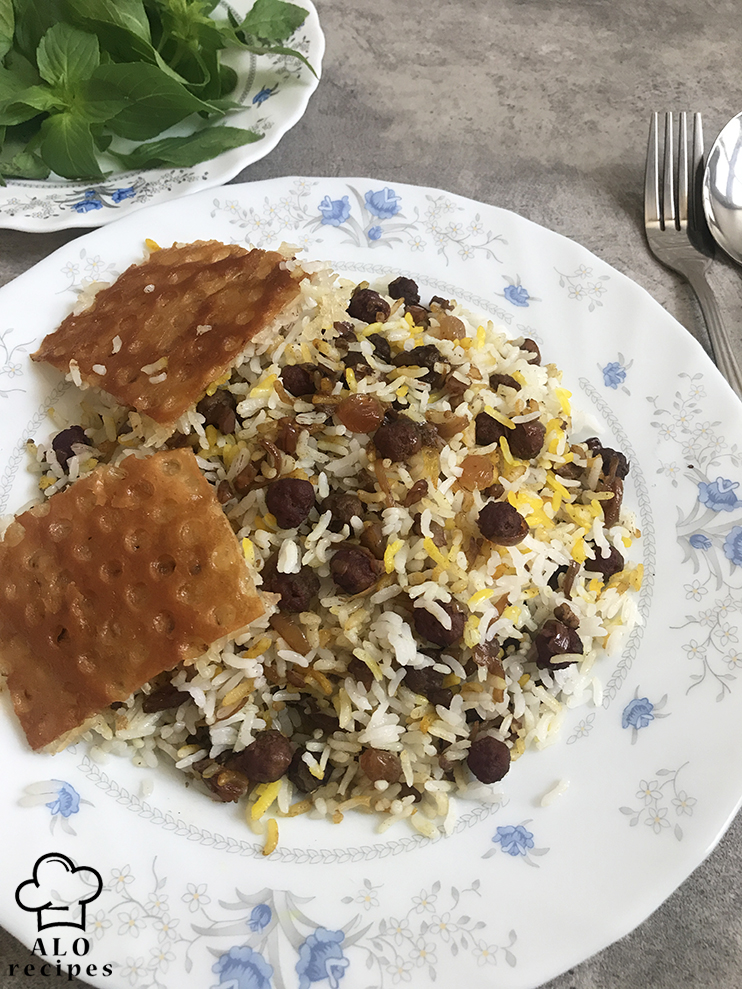
In the recipe of Persian tahdig (Crispy persian rice), the rice is cooked in boiling water for about 2-3 minutes. Then it’s drained and a piece of bread is placed in the bottom of the pot, and finally the rice is let to be steamed for another 50 to 60 minutes on very low heat.
The result of cooking rice this way will be a tempting and attractive tahdig, making the rice grains to be cooked and steamed nicely into the bargain.
The most important points in Persian tahdig recipe:
If you want to have a well-fried, golden and roasted tahdig, keep the following in mind:
- Type of pot: Preferably use a non-stick pot so that tahdig can be easily separated from the pot.
- Amount of oil: Enough oil should be used as to fry the bread. Tahdig is not supposed to be immersed in oil because in the end, the oil drips from tahdig and that’s not any good. About 3-4 tablespoons of liquid oil will suffice for a small pot.
- Gas heat: The heat for steaming rice needs to be low. While the rice is being steam-cooked, tahdig gets roasted as well. If the heat is high, your tahdig will be scorched. If it’s too low, then tahdig will not turn golden.
Bread Tahdig Recipe
Ingredients
- 3 cup Rice as required
- Bread
- 1 tbsp Salt
Instructions
- Soaking the rice: Clean the rice well, then rinse it several times and soak it in water for a few hours. If you're short of time (say10 minutes), you'd better soak the rice in warm water.
- Boiling the water: In a non-stick pot, pour some water and put it on the heat. The amount of water should be enough for two knuckles to be above the rice. Bring the water to a boil.
- Pour the rice in the boiling water.
- Add some salt. As for 3 cups of rice roughly one tablespoon of salt will be enough. Stir a bit so as not to let the rice grains stick together.
- Draining the rice: Having half-cooked the rice, remove it from the heat and pour it into a drain. Rice grains ought not to be too soft, but rather firm. Do not put the lid on the pot. (cook until al dente)As for testing, when you take a grain of rice and place it under your teeth, the inside should still be slightly firm while the outside is cooked. Never allow the rice to cook and soften completely since in the next step they're going to steam and soften nicely.As a general rule, depending on the quality of rice it takes 3 to 5 minutes to get half-cooked. Of course, the cooking time depends on the grade of the rice and the gas heat; some sooner, some later (and some never these days!).
- Putting the bread in the pot: To make the bread tahdig, put the non-stick pot on low heat and pour some oil into it. About 4 tablespoons would be enough for a small pot.Take a thin slice of bread and cut it to the size of the pot. Once the oil is hot, put the bread in the oil to get fried. Fry it slightly on both sides.Note that it's enough if it's fried slightly, and there's no need to be fried completely. When steaming rice, the bread is going to get brittle and crispy well.The heat at this stage should be slightly higher than when steaming rice so that the bread could be fried.
- Pouring the rice on the bread: After the bread is fried, reduce the heat (a faint heat to steam the rice). Then pour the rice on the bread. Collect the rice from the corners of the pot and pile it up in the center.Make a few holes in the rice using the handle of the skimmer so that the steam could reach the middle of the pile as well and the steam-cooking is done faster. Pour kind of 4 tablespoons of oil on everywhere on the surface of the rice so that its grains could separate more easily after cooking.
- Waiting for the polo to cook: Put the lid on the pot and wait for the rice to cook and tahdig form on the bottom of the pot.The time to steam rice depends on its quality, but generally it takes some 40 to 60 minutes for the rice to cook and the tahdig to form. In the first 5 minutes, turn the heat up a little bit (just a little) as to let the tahdig form, then turn the heat down so that the rice gets steamed.
- After the required time, remove the lid and test the rice. If it's cooked evenly, it means it's ready. If you feel it's not cooked yet, put the lid on immediately so that the steam doesn't escape.
- When your Persian rice with bread tahdig is ready, put it in a dish and then separate tahdig from the pot, cut it, and put it in the dish (as a garnish).
An attractive offer:
You can do this way as you pour the rice on the bread in the pot: First, pour half of the rice in the pot on the bread. Press the rice with the back of a spatula so that the rice sticks well together. Then pour the rest of the rice and press again to make it tightly packed.
Press the edges nicely as well and level them. This is in order for the rice to take the shape of the pot.
When finished, you’ll see that the rice has taken the shape of the pot and tahdig has formed. In Iran, this kind of cooking rice is also called polo qalebi (Polo which is molded) as the rice takes exactly the form of the pot. Having finished, remove the pot from the heat.
Put a dish on the lid of the pot and turn the pot over. Polo qalebi retains its shape well on the dish. Of course, because the rice is pressed together and less steam could flow between the grains, there would be a need to make a few holes in the surface of the rice and to wait more than usual for the steaming to be done.
You can garnish polo qalebi with raisins, barberries, sliced pistachios or almonds and surprise your friends at parties with this elegant honorable dish.
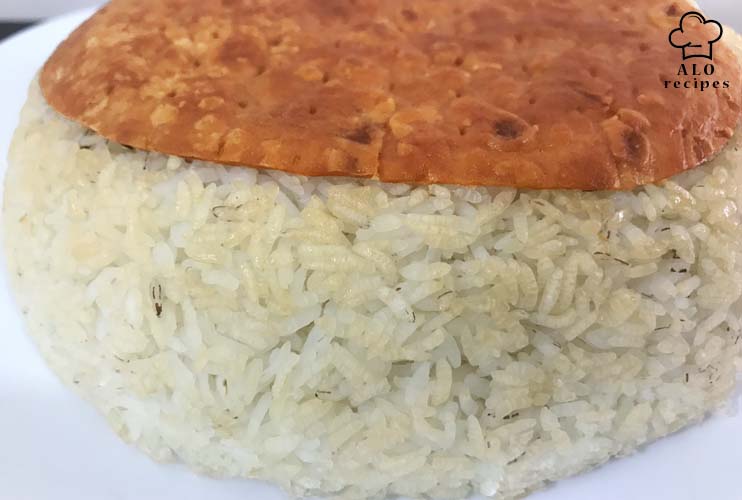
Important points :
- Either a thin or a thick bread can be used.
- Any type of pot could be chosen for cooking bread tahdig but non-stick pots like granite, cast iron, and Teflon are among the best options.
- If your pot is large and the bread is small, put two slices of bread together to cover the bottom.
- Wrap the lid in a towel, so that the stream can’t escape and the rice cooks faster.
- You can add 1-2 tablespoons of brewed saffron to the oil to make your Persiantahdig much more colorful. Saffron fragrance besides tahdig is impressive. Or you can use a little bit turmeric instead of saffron.
- If you have not much time to soak the rice (say 10 minutes), besides the possibility of soaking the rice in hot water, notice that less-soaked rice cooks a bit later.
For instance, if after 2 hours of soaking it cooks in 4 minutes, when you’re in a hurry and soak it for only 20 minutes, it needs 5 minutes to cook (plus 50-60 minutes of steaming). - There’s no problem not to rinse the rice several times in step 1. Some people like rice starch to be retained and therefore don’t rinse it. If you don’t do the rinsing and cook it as Kateh, the rice taste and scent would be preserved, but the grains would stick a bit together.
If you rinse it and cook it as Abkesh, the rice grains will separate better afterwards. To have tahdig, you can use either Abkesh or Kateh method. - Do not stir the rice too much as it will crumble.
- I suggest that in order for your rice to cook faster, after you pour the rice into the pot and put the lid on it, for roughly 5 minutes increase the heat a little from what is nice for steaming. Once it has steamed slightly, then turn the heat down to be suitable to stew on (i.e. faint heat) and let the rice cook for 50-60 minutes with your tahdig.
- Having turned the heat off, try serving polo ba tahdig until it’s crispy. Because if you leave the lid of the pot closed, the steam will soften the tahdig.
Sliced bread bottoms
You can cut the bread with scissors and cut it into small square pieces. Then pour oil in the pot and heat it. Arrange the pieces of bread in the pot. When both sides are slightly fried, pour the al dente rice on it.
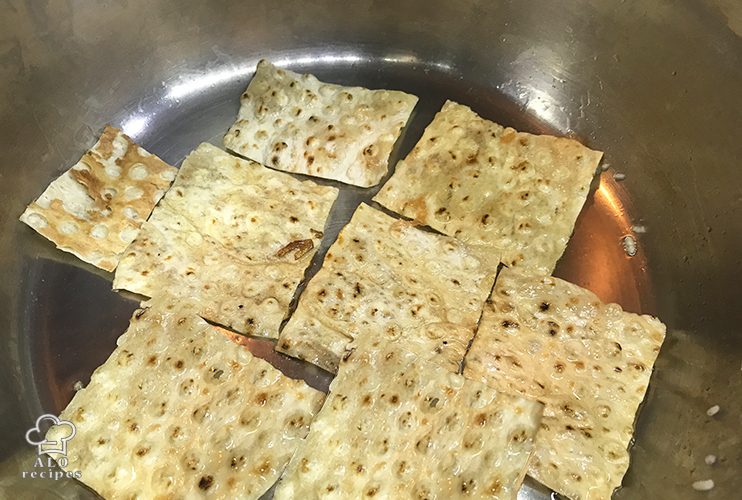
With this method, after steaming the rice, you will have beautiful square tahdig and tahdig will not crumble when you get a piece. Each person gets a piece of the tahdig.
![Ghanbar Polo Shirazi]() tahdig meaning
tahdig meaning
Tahdig : Derived from “tah” (meaning “bottom”) plus “dig” (meaning “pot”), is a traditional common Iranian recipe in which you place sliced potatoes or some bread in the bottom of the boiled rice (or “polo” in Persian) pot to be stewed together.
Other Persian words:
Abkesh : Composed of “Ab” (meaning “water”) and “Kesh” (meaning “drained”).
ba : Meaning “with”
qalebi : Polo which is molded (“qaleb” means “mold”).


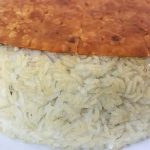
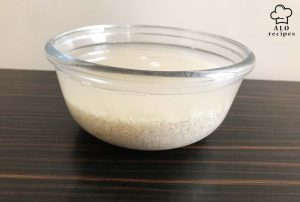
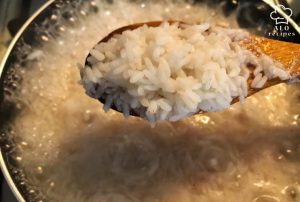


 tahdig meaning
tahdig meaning